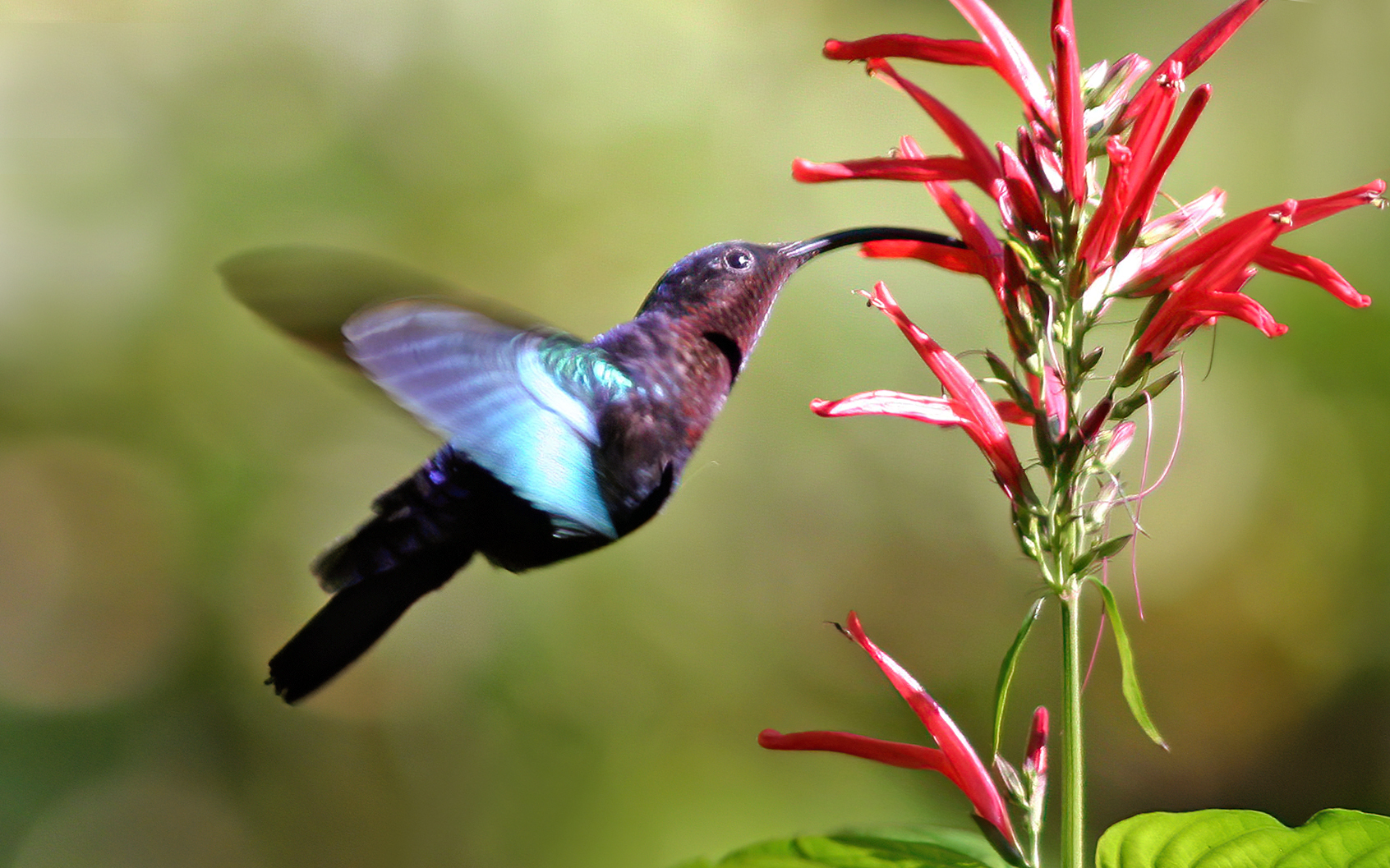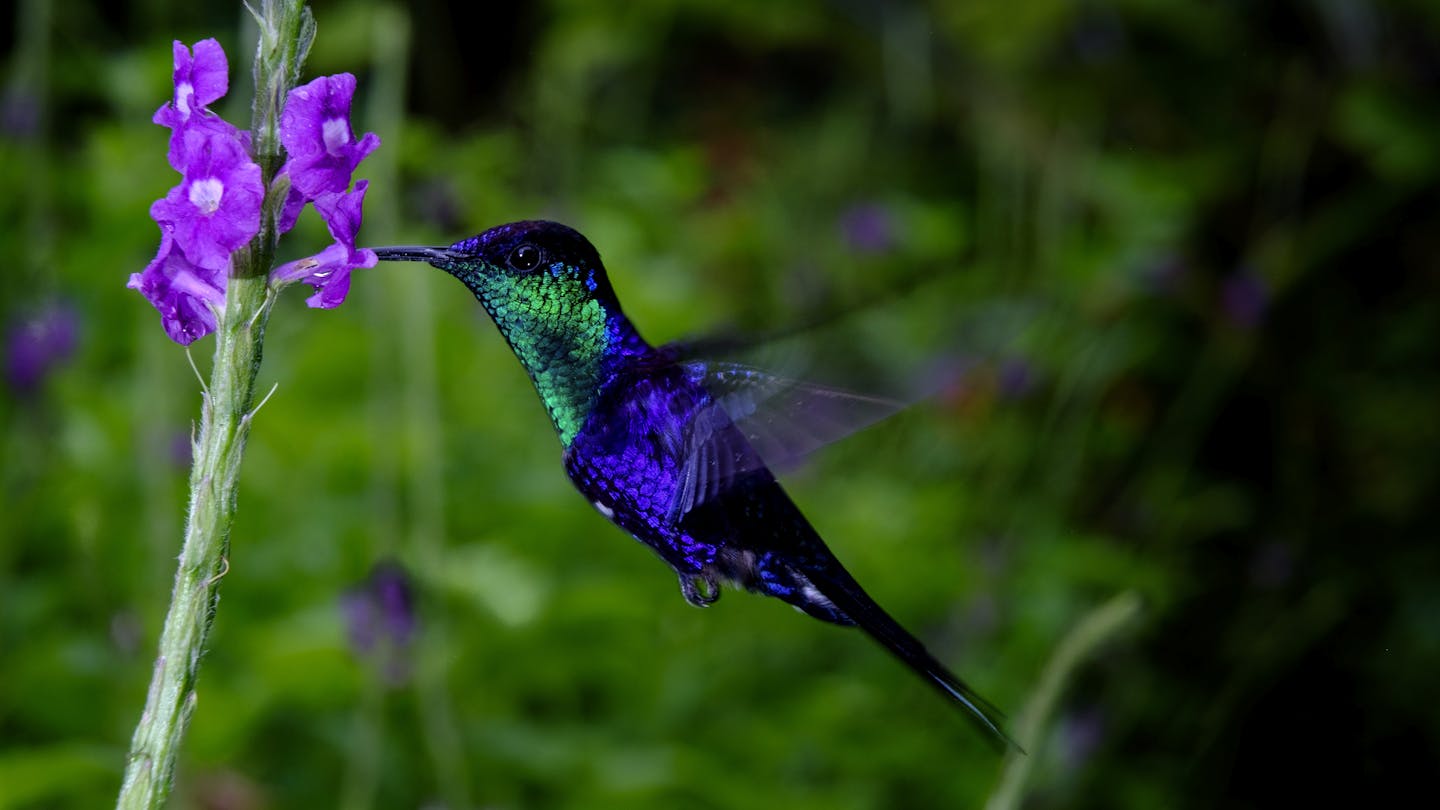Hummingbirds: small, but mighty impact
Hummingbirds are the smallest species of bird on the planet. Most people know this, much like they know the contrasting zoological trivia that the ostrich is the largest bird.
However, a less commonly known fact is that there are approximately 350 different types of hummingbirds, compared to just one type of common ostrich! The vast diversity of hummingbirds underscores their pivotal role in our ecosystem, which is why, on September 5th, we celebrate National Hummingbird Day.
Hummingbirds are native to the continents of the New World, spanning regions from southern Alaska to the tip of Tierra Del Fuego in Chile. Despite their minuscule size, averaging only 3-5 inches in length, they boast a remarkable wing beat frequency, sometimes reaching 80 times per second.
This rapid flapping allows them to nimbly navigate through leaves, brush, and hover precisely at their favorite destinations: flowers. As specialized nectarivores, hummingbirds use their long, pointed bills to sip nutrients from blossoms. Like how bumblebees inadvertently spread pollen, hummingbirds transport seeds on their feathers and beaks as they flit from one flower to another.
The role of hummingbirds in pollination
Scientists theorize that certain plants rely on hummingbirds as primary pollinators, especially in areas where flying insects struggle to thrive due to rainy, lowland conditions. Moreover, hummingbird species exhibit specialized preferences, with different species favoring specific flowers. Such selectivity ensures they don't overlap too much with other pollinators. Essentially, they're intricately linked with the ornithophilous flowers they feed on.
Consequently, the evolutionary adaptations of each hummingbird species—be it their beak length, curvature, or body mass—correlate with the specific traits of their preferred plants, such as the flower's size, curvature, and nectar volume. This intricate relationship supports a diverse hummingbird population and encourages the proliferation of varied plant species.

Female purple-throated carib feeding at a flower. Image credit: Creative Commons, Charles J Sharp
Case in point: The Heliconia bihai
High up in the Caribbean mountains, one can find the Heliconia bihai. This vibrant tropical flower, adorned with triangular petals in shades of red, orange, or fuchsia, perfectly complements the bill curvature of the purple-throated Carib hummingbird.
Such intricate co-evolution between avian and plant life, cultivated over 22 million years, underscores the importance of both these species in diversifying our planet's vegetation. The role of hummingbirds extends beyond merely pollinating similar species; they're also instrumental in cross-pollinating different flower species.
Hummingbirds: The climate change indicator
The strong bond between specific hummingbirds and specific flowers offers a microcosmic view into the broader effects of climate change and habitat destruction. With their specialized diets, any disruption in a hummingbird's environment can have immediate repercussions on its population.
This interdependency between hummingbirds and plants illustrates the delicate balance of our ecosystem. When a hummingbird species faces extinction, it can create a domino effect, jeopardizing various plant species and, by extension, other species that rely on those plants for survival.
Yet, the story of the hummingbird also embodies hope. If one species, acting harmoniously with its surroundings, can bring about positive change, then it's conceivable that such collective good behavior can foster a more sustainable world for all.
Explore Earth's Bioregions


